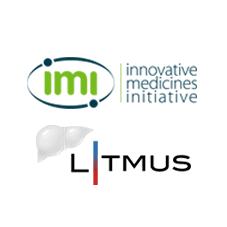In recent decades there have been remarkable reductions in death from cardiovascular diseases, largely due to a decreased prevalence of smoking and modern science that has led to effective therapies for hypertension and high cholesterol. Even so, cardiovascular diseases (CVD) remain the number one cause of death worldwide.1
Internal Medicine and Metabolic Disease Research
CVD continues as an epidemic, driven by a number of factors, including the rising rates of obesity and its resulting metabolic diseases, such as type 2 diabetes mellitus and the metabolic syndrome, which refers to the group of risk factors that increase an individual’s risk for heart disease and other health problems.2 The modern lifestyle has promoted a new array of cardiovascular risk factors, but treatments for these have remained elusive. We believe that a comprehensive program is needed to address the collection of diseases of the cardiovascular system, as well as their root causes, including obesity and metabolic disease.

We now understand obesity leads to diabetes, and diabetes in turn increases the risk of heart failure and other types of heart disease. In fact, more than two-thirds of people age 65 or older with diabetes die from some form of heart disease.3 Another significant area of unmet need that reflects the global dysmetabolic state is non-alcoholic steatohepatitis (NASH). NASH is preceded by an abnormal accumulation of lipid in the liver, a condition that is associated with obesity and insulin resistance and is estimated to impact as many as 30% of all adults in the US.4 Ultimately, NASH can lead to liver fibrosis, cirrhosis and eventually liver failure5 or cancer6, and has no approved treatment.
With costly hospitalizations on the rise, economists project that failure to properly invest in prevention and treatment could cost as much as $47 trillion worldwide by 2036.7
For more than 50 years, Pfizer has led the way in redefining the management of cardiovascular risk by bringing much-needed treatments to patients.
Today, Pfizer is focused on investigating potential therapies that treat both the metabolic abnormalities that increase the likelihood of cardiovascular disease and the heart itself by trying to alter the way it responds to the abnormal metabolic state. This includes more targeted potential therapies, as well as possible therapies that are a combination of two or more drugs, which could bring additional benefits to patients.
Our early discovery efforts focus on emerging areas of CV research such as control of eating disorders, type 2 diabetes/muscle uptake of glucose and non-alcoholic fatty liver disease/non-alcoholic steatohepatitis.


Work with Us
If you’re interested in collaborating with our Metabolic Disease & Cardiovascular Risk research team and want to learn more about our work, visit our Internal Medicine Partnering page. We welcome the opportunity to discuss how we can work together.
Selected Publications from the Metabolic Disease & Cardiovascular Risk Research Unit
- A long-acting FGF21 molecule PF-05231023 decreases body weight and improves lipid profile in non-human primates and type 2 diabetic subjects
Cell MetabolismTalukdar T, Zhou Y, Li D, Rossulek M, Dong J, Somayaji V, Weng Y, Clark R, Lanba A, Owen BM, Brenner MB, Trimmer JK, Chabot JR, Erion DM, Rolph TP, Goodwin B, and Calle RA.March 8 2016 - Characterization of a Novel Intestinal Glycerol-3-phosphate Acyltransferase Pathway and Its Role in Lipid Homeostasis
The Journal of Biological ChemistryKhatun I, Clark RW, Vera NB, Kou K, Erion DM, Coskran T, Bobrowski WF, Okerberg C, Goodwin B.February 5 2016 - Discovery of 2-(6-(5-Chloro-2-methoxyphenyl)-4-oxo-2-thioxo-3,4-dihydropyrimidin-1(2H)-yl) acetamide (PF-6282999): A Highly Selective Mechanism-Based Myeloperoxidase Inhibitor for the Potential Treatment of Cardiovascular Diseases
Journal of Medicinal ChemistryRuggeri RB, Buckbinder L, Bagley SW, Carpino PA, Conn EL, Dowling MS, Fernando DP, Jiao W, Kung DW, Orr ST, Qi Y, Rocke BN, Smith A, Warmus JS, Zhang Y, Bowles D, Widlicka DW, Eng H, Ryder T, Sharma R, Wolford A, Okerberg C, Walters K, Maurer TS, Zhang Y, Bonin PD, Spath SN, Xing G, Hepworth D, Ahn K, Kalgutkar AS.October 28 2015 - Discovery of a Selective Covalent Inhibitor of Lysophospholipase-like 1 (LYPLAL1) as a Tool to Evaluate the Role of this Serine Hydrolase in Metabolism
ACS Chemical Biology Ahn K, Boehm M, Brown MF, Calloway J, Che Y, Chen J, Fennell KF, Geoghegan KF, Gilbert AM, Gutierrez JA, Kalgutkar AS, Lanba A, Limberakis, Magee TV, O'Doherty I, Oliver R1,2, Pabst B1,2, Pandit J, Parris K, Pfefferkorn JA, Rolph TP, Patel R, Schuff B, Shanmugasundaram V, Starr JT, Varghese AH, Vera NB, Vernochet C, Yan J.July 19 2016
Nature NeuroscienceGarfield AS, Shah BP, Burgess CR, Li MM, Li C, Steger JS, Madara JC, Campbell JN, Kroeger D, Scammell TE, Tannous BA, Myers Jr. MG, Andermann ML, Krashes MJ, Lowell BB.September 19 2016 - Evaluation of a mathematical model of rat body weight regulation in application to caloric restriction and drug treatment studies
PLoS OneSelimkhanov J, Thompson WC, Patterson TA, Hadcock JR, Scott DO, Maurer TS & Musante CJ.May 26 2016 - FGF21 Regulates Sweet and Alcohol Preference
Cell MetabolismTalukdar S, Owen BM, Song P, Hernandez G, Zhang Y, Zhou Y, Scott WT, Paratala B, Turner T, Smith A, Bernardo B, Müller CP, Tang H, Mangelsdorf DJ, Goodwin B, Kliewer SA.February 9 2016 - MAP4K4 is a Threonine Kinase that Phosphorylates FARP1
ACS Chemical BiologySchwaid A, Su C, Loos P, Wu J, Nguyen C, Stone K, Kanyo J, Geoghegan K, Bhattacharya S, Dow R, Buckbinder L, Carpino P.September 30 2015 - Pharma and Academia: What We Have Here Is a Failure to Communicate
Cell MetabolismBirnbaum MJ.September 13 2016